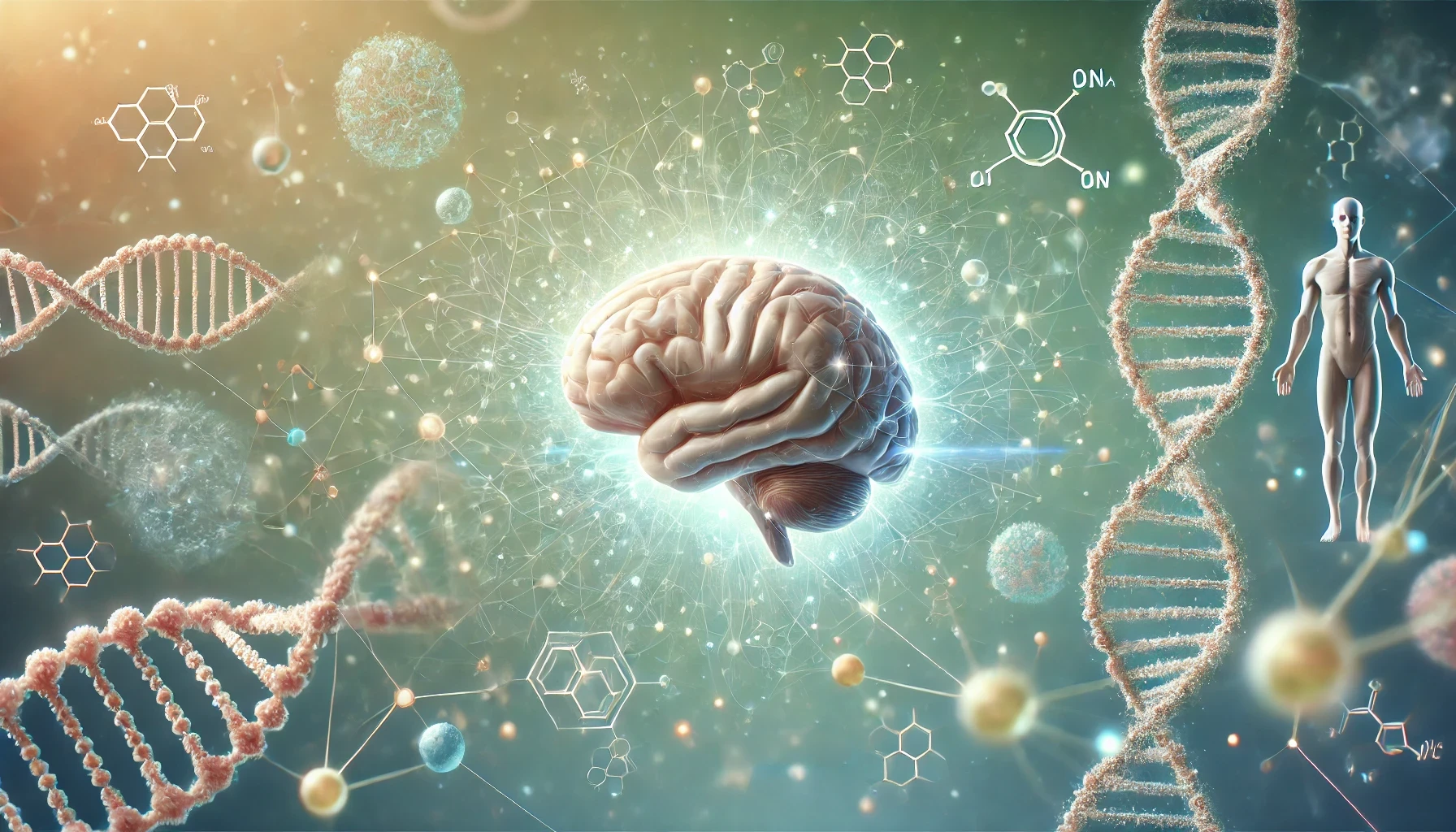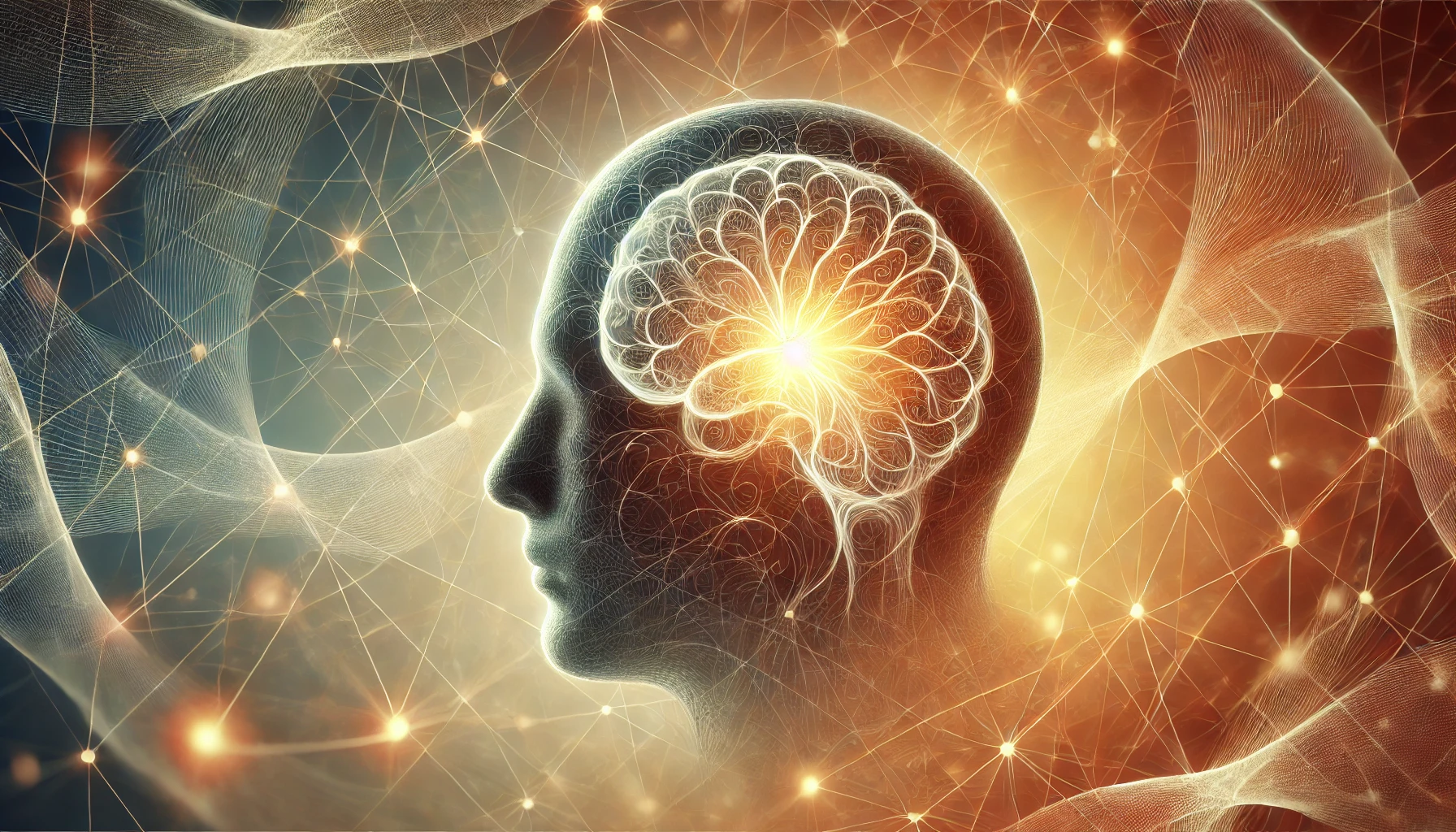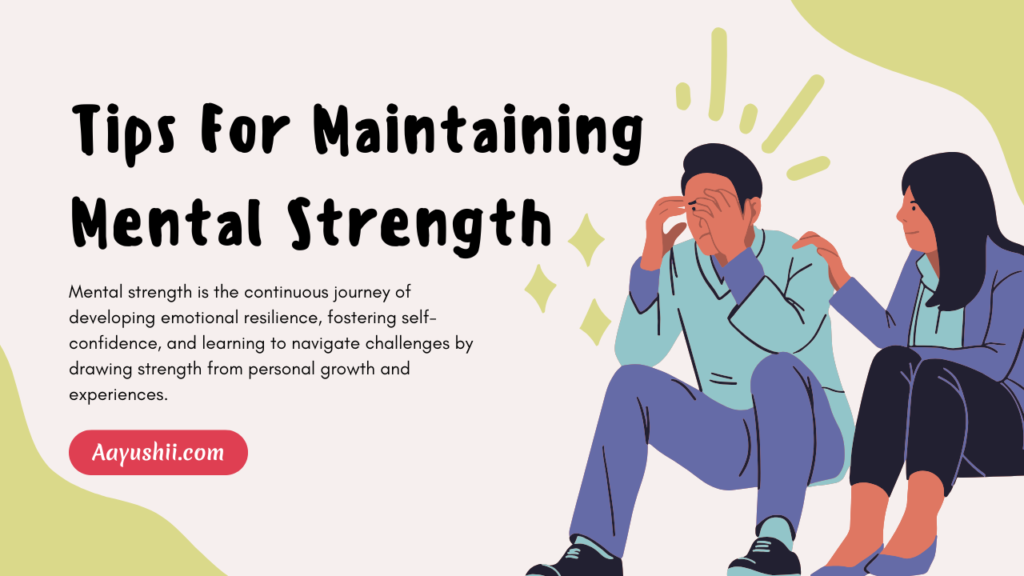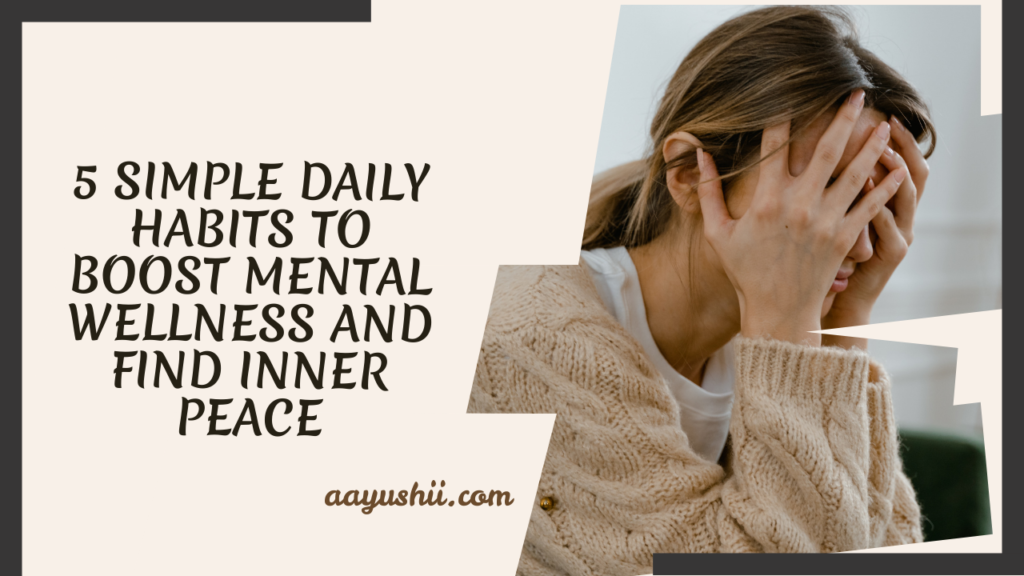Mental well-being is more than just the absence of mental illness—it is a dynamic state of thriving, adapting, and finding fulfillment in our daily lives. When we nurture our mental well-being, we empower ourselves to navigate challenges with resilience, maintain meaningful relationships, and pursue personal growth. Cultivating mental well-being is not an overnight process; rather, it is a lifelong journey that requires a comprehensive understanding of the factors that influence our mindset and the techniques that help us thrive. In this pillar article, we will explore the foundations of mental well-being in depth, outlining key concepts, practical strategies, and clear examples to help you build a resilient mindset for lasting health.
Understanding Mental Well-Being

Definition of Mental Well-Being
Mental well-being refers to a state in which an individual can cope with everyday stressors, work productively, and contribute to their community in meaningful ways. It involves emotional resilience, psychological balance, and the ability to adapt to various life circumstances. Mental well-being is multidimensional, encompassing:
- Emotional Health: The ability to understand, regulate, and express emotions in a healthy manner.
- Psychological Health: A balanced thought process, positive self-perception, and healthy coping skills.
- Social Well-Being: Satisfying relationships, a sense of belonging, and meaningful social connections.
Why Mental Well-Being Matters
Good mental well-being lays the groundwork for a fulfilling life by influencing how we think, feel, and act. When individuals enjoy strong mental health, they are more likely to:
- Form and maintain healthier relationships
- Experience greater satisfaction in daily activities
- Show increased creativity and problem-solving abilities
- Demonstrate resilience in the face of adversity
On the other hand, compromised mental well-being can lead to difficulties in coping with stress, forming stable relationships, and maintaining healthy behaviors. Over time, this may escalate into chronic stress, anxiety, or other mental health challenges.
The Concept of Resilience

Defining Resilience
Resilience is the capacity to bounce back from hardships and adapt in the face of adversity. Far from being an inborn trait, resilience is a skill set that can be developed through conscious effort and practice. People who demonstrate resilience maintain a sense of hope and positivity, even when life circumstances are challenging.
Key Components of Resilience
- Optimism: The belief that challenges are temporary and surmountable.
- Self-Efficacy: A strong belief in one’s ability to manage difficulties and learn new skills.
- Emotional Regulation: Techniques and habits that help individuals navigate stress and negative emotions effectively.
- Social Support: Maintaining healthy relationships and a reliable support network.
- Adaptability: Being open to change and flexible in the face of sudden challenges.
How Resilience Strengthens Mental Well-Being
- Protective Buffer: People with higher resilience are less likely to experience long-term mental distress when confronted with major life stressors.
- Positive Coping Skills: Resilient individuals tend to use adaptive coping strategies, such as problem-solving, seeking support, and positive reframing.
- Long-Term Success: With resilience, individuals are better equipped to achieve personal goals, maintain strong relationships, and handle professional setbacks.
Biological Foundations of Mental Well-Being

Brain Chemistry and Hormones
Our mental state is significantly affected by our body’s neurochemical balance. Several key neurotransmitters and hormones play a role in regulating mood, including:
- Serotonin: Often associated with feelings of happiness, contentment, and overall well-being.
- Dopamine: Related to motivation, reward, and pleasure experiences.
- Cortisol: Known as the “stress hormone,” cortisol spikes during stressful situations and can negatively affect mood and cognition when elevated chronically.
- Norepinephrine: Plays a role in alertness, energy levels, and the fight-or-flight response.
Genetics
Genetics can predispose individuals to certain mental health conditions, such as depression or anxiety, but genes are only part of the picture. Environmental factors, lifestyle choices, and coping strategies can also significantly influence the development and manifestation of mental health issues. Understanding this interplay underscores the importance of proactive approaches to mental well-being—while you can’t change your genes, you can shape your environment, habits, and responses to stress.
Neuroplasticity: The Brain’s Ability to Change
Neuroplasticity refers to the brain’s capacity to rewire itself through experience, learning, and practice. It is a crucial concept for mental well-being, as it implies that our brains are not fixed. By engaging in regular mental exercises—like meditation, creative problem-solving, or cognitive reframing—you can strengthen neural connections that support resilience and healthier thought patterns.
Psychological Foundations: Core Beliefs and Thought Patterns

The Role of Core Beliefs
Core beliefs are the deeply held assumptions we have about ourselves, others, and the world around us. These beliefs shape how we interpret events and can either support or undermine mental well-being. Some examples of core beliefs include:
- “I am capable and worthy of success.”
- “People are generally trustworthy.”
- “The world is a dangerous place.”
When core beliefs are overly negative or rigid, they can lead to distortions in thinking, perpetuating anxiety, depression, or chronic stress. Identifying and challenging unhelpful beliefs can create new mental pathways that foster resilience and self-acceptance.
Common Cognitive Distortions
Cognitive distortions are patterns of negative thinking that can exaggerate challenges and undermine self-confidence. Examples include:
- All-or-Nothing Thinking: Viewing situations in black-and-white terms, with no middle ground.
- Catastrophizing: Automatically assuming the worst possible outcome.
- Overgeneralization: Drawing sweeping conclusions based on a single experience.
- Personalization: Attributing external events to personal failings, even when unrelated.
Cognitive-Behavioral Techniques for Healthier Thinking
Cognitive-behavioral therapy (CBT) offers practical tools for identifying and reframing unhelpful thought patterns. Techniques include:
- Thought Records: Writing down negative thoughts and examining the evidence for or against them.
- Socratic Questioning: Asking probing questions (“What’s the worst that could happen?” “Is there a more balanced view?”) to challenge automatic assumptions.
- Behavioral Experiments: Testing beliefs in real-life scenarios to gather new evidence.
Social and Environmental Factors Shaping Mental Health

Influence of Social Support
Strong social connections act as a buffer against stress, anxiety, and depression. When we feel supported and understood, we are more likely to cope with life’s challenges effectively. Social support can come from:
- Family
- Friends
- Community groups
- Mentors or coaches
- Online support communities
Cultural and Societal Norms
Cultural and societal norms can impact mental well-being through expectations about gender roles, success, and social status. For example, in some cultures, admitting mental distress might be seen as a weakness, hindering individuals from seeking help. Recognizing these influences is the first step toward breaking limiting cultural norms and fostering a supportive social environment.
Environmental Stressors
Physical surroundings, such as the quality of housing, neighborhoods, and available resources, also shape mental well-being. Factors like pollution, overcrowding, and limited access to healthcare can increase stress levels. On a personal level, an organized, clean living space can promote calmness and a sense of control, whereas a cluttered, chaotic environment can exacerbate anxiety and stress.
Healthy Habits that Support Mental Well-Being

Nutrition and Mental Health
Your diet can have a direct impact on your mood and cognitive functions. Certain nutrients, such as omega-3 fatty acids, B vitamins, and antioxidants, are known to support brain health. A balanced diet rich in whole grains, lean proteins, fruits, and vegetables can regulate blood sugar levels, reduce inflammation, and support a stable mood.
Examples of Brain-Friendly Foods
- Fatty Fish (e.g., salmon, mackerel): High in omega-3 fatty acids which support cognitive function.
- Leafy Greens (e.g., spinach, kale): Packed with vitamins and antioxidants.
- Berries (e.g., blueberries, strawberries): Contain high levels of antioxidants that protect brain cells.
- Nuts and Seeds (e.g., walnuts, flaxseeds): Good sources of healthy fats and other nutrients.
Exercise and Physical Activity
Regular exercise contributes to mental well-being by reducing stress hormones, boosting mood-enhancing neurotransmitters like dopamine and serotonin, and improving sleep quality. Aerobic exercises, strength training, yoga, and even brisk walking can all provide mental health benefits.
Tips for Incorporating Exercise
- Schedule Workouts: Treat them like appointments that you can’t miss.
- Start Small: Even a 10-minute daily walk can have positive effects on mood.
- Buddy System: Exercising with a friend can increase accountability and social support.
- Mix it Up: Vary your exercises to keep your routine engaging.
Sleep Quality
Sleep is essential for cognitive function, emotional regulation, and physical health. Poor sleep can exacerbate feelings of anxiety, depression, and irritability, while adequate rest fosters mental clarity, concentration, and resilience.
Best Practices for Better Sleep
- Set a Consistent Schedule: Go to bed and wake up at the same time daily.
- Limit Screen Time: Avoid electronics at least an hour before bedtime.
- Create a Relaxing Environment: Keep your bedroom cool, dark, and quiet.
- Wind Down: Engage in calming activities before bed, such as reading or a warm bath.
Strategies for Stress Management

Understanding Stress
Stress is a natural response that helps us meet the demands of daily life. However, chronic or overwhelming stress can lead to a host of mental and physical issues. Learning to manage stress effectively is key to maintaining mental well-being.
Common Symptoms of Excessive Stress
- Persistent headaches
- Difficulty sleeping
- Irritability or mood swings
- Muscle tension
- Lack of motivation or focus
Effective Stress-Management Techniques
- Deep Breathing: Simple breathing exercises, such as the 4-7-8 technique (inhale for 4 seconds, hold for 7, exhale for 8), can rapidly reduce stress.
- Progressive Muscle Relaxation: Tensing and relaxing each muscle group to identify and release tension.
- Time Management: Prioritize tasks, break them into manageable steps, and use to-do lists or productivity apps.
- Social Support: Sharing your worries with trusted friends or family can instantly lighten the emotional burden.
Mindfulness and Meditation

What is Mindfulness?
Mindfulness is the practice of paying intentional attention to the present moment, without judgment. It involves acknowledging thoughts, feelings, and bodily sensations as they arise, and letting them pass without getting caught up in them.
Benefits of Mindfulness
- Reduced Stress: Mindful awareness helps break cycles of worry and rumination.
- Enhanced Emotional Regulation: Recognizing emotions as they appear empowers you to respond effectively rather than react impulsively.
- Greater Focus: Mindfulness trains the brain to concentrate on the task at hand.
- Improved Self-Awareness: Regular practice can lead to deeper insights about personal values, desires, and habits.
Simple Mindfulness Exercises
- Mindful Breathing: Set aside a few minutes to focus purely on your breath. Notice the rise and fall of your chest, and guide your attention back when your mind wanders.
- Body Scan: Slowly scan your body from head to toe, noting areas of tension or relaxation.
- Mindful Eating: Pay attention to the taste, texture, and smell of each bite of food.
- Walking Meditation: Walk slowly, focusing on each footstep and how your body feels with each movement.
The Importance of Self-Compassion

Defining Self-Compassion
Self-compassion involves treating yourself with the same kindness and understanding you would offer a friend. Instead of harsh self-criticism, self-compassion encourages gentle self-talk and patience in the face of mistakes.
Three Core Components
- Self-Kindness: Replacing harsh judgments with supportive and empathetic words.
- Common Humanity: Acknowledging that everyone experiences setbacks, and you are not alone.
- Mindfulness: Observing negative thoughts and feelings without letting them define your self-worth.
How Self-Compassion Enhances Mental Well-Being
- Reduces Negative Self-Talk: Helps break the cycle of shame and self-blame.
- Improves Emotional Resilience: Encourages acceptance and learning from mistakes, rather than dwelling on them.
- Promotes Healthier Relationships: A self-compassionate attitude often leads to greater empathy and kindness toward others.
Example Exercise: Writing a Self-Compassion Letter
- Identify a Challenging Situation: Something causing you stress or self-criticism.
- Write from a Friend’s Perspective: Imagine a supportive friend’s kind words about your situation.
- Offer Understanding and Kindness: Remind yourself that everyone makes mistakes or faces challenges.
- Reflect and Revisit: Re-read the letter when self-critical thoughts arise.
Building Emotional Intelligence

What Is Emotional Intelligence?
Emotional intelligence (EI) is the capacity to identify, understand, and manage one’s own emotions while also recognizing and influencing the emotions of others. It comprises four core domains:
- Self-Awareness: Understanding your emotions, strengths, weaknesses, and values.
- Self-Management: Controlling impulsive feelings, adapting to change, and following through on commitments.
- Social Awareness: Recognizing the emotions and needs of others.
- Relationship Management: Building healthy connections, inspiring and influencing others, and resolving conflicts effectively.
Techniques to Enhance Emotional Intelligence
- Active Listening: Fully focusing on the speaker, asking clarifying questions, and reflecting back what you hear.
- Emotion Journaling: Writing down your emotions and triggers each day can help identify patterns and areas for growth.
- Empathy Practice: Put yourself in someone else’s shoes and try to see the situation from their perspective.
- Regular Feedback: Seek honest feedback from trusted friends or colleagues about how you handle emotions in different situations.
Enhancing Cognitive Flexibility

Defining Cognitive Flexibility
Cognitive flexibility is the mental ability to switch between different concepts or adapt to new and unexpected situations. It underpins problem-solving, creativity, and adaptability—all critical components of mental resilience.
Benefits for Mental Health
- Better Problem-Solving: A flexible mind sees multiple paths to a solution.
- Reduced Stress: Adaptability helps individuals handle change without significant distress.
- Greater Creativity: Allows for out-of-the-box thinking and innovation.
Exercises to Improve Cognitive Flexibility
- Challenge Routine: Occasionally change your daily routines, such as trying a different route to work or experimenting with a new hobby.
- Brain Games: Engage in puzzles like Sudoku, crossword puzzles, or strategy games that require thinking from different angles.
- Perspective-Shifting: When facing a problem, write down at least three different potential solutions or vantage points.
- Seek Novel Experiences: Trying new recipes, learning new languages, or joining a new group can boost mental agility.
Connecting Physical Health and Mental Well-Being

The Mind-Body Connection
Physical health and mental well-being are deeply intertwined. Chronic physical conditions can negatively impact mood and self-esteem, while poor mental health may lead to unhealthy behaviors such as substance abuse or neglect of self-care.
Benefits of Physical Activity for the Brain
- Improved Neuroplasticity: Exercise supports the growth of new brain cells and neural connections.
- Stress Reduction: Physical activity lowers cortisol levels and releases endorphins, which help alleviate anxiety.
- Better Sleep: Regular workouts improve sleep quality, a cornerstone of mental well-being.
Holistic Approaches
- Nutrition: A diet rich in whole foods fuels both body and mind.
- Sleep Hygiene: Consistent sleep patterns support cognitive function and emotional balance.
- Mindful Exercise: Combining exercise with mindfulness—such as yoga or tai chi—can further enhance mental benefits.
Seeking Professional Help

When to Seek Help
While self-help strategies and lifestyle changes can significantly improve mental well-being, there are times when professional intervention is necessary. Warning signs that you may need professional help include:
- Persistent feelings of sadness or hopelessness
- Difficulty functioning in daily life
- Extreme mood swings or changes in behavior
- Thoughts of self-harm or harm to others
- Substance abuse impacting relationships or responsibilities
Types of Mental Health Professionals
- Psychologists: Experts in diagnosing and treating mental health issues through psychotherapy and evidence-based interventions.
- Psychiatrists: Medical doctors who can prescribe medications and provide various therapeutic interventions.
- Counselors/Therapists: Professionals trained in specific techniques, such as cognitive-behavioral therapy, couples therapy, or grief counseling.
- Social Workers: Provide counseling and connect patients with community resources.
Therapy and Treatment Options
- Cognitive-Behavioral Therapy (CBT): Focuses on challenging and changing unhelpful cognitive distortions.
- Dialectical Behavior Therapy (DBT): Emphasizes emotional regulation and interpersonal effectiveness.
- Psychodynamic Therapy: Explores past experiences and how they shape current behavior and feelings.
- Medication Management: For conditions like depression, anxiety, or bipolar disorder, medication may be recommended alongside therapy.
Explore Support Through BetterHelp

If you’re ready to take the next step in prioritizing your mental well-being, connecting with a licensed therapist through online platforms like BetterHelp can be a convenient and effective option. BetterHelp provides access to thousands of experienced professionals who can help with a wide range of challenges, including stress management, anxiety, depression, and building resilience.
Why Choose BetterHelp?
- Convenience: Access therapy from the comfort of your home, on your schedule.
- Affordability: Flexible pricing options and financial aid for those who qualify.
- Confidentiality: Secure and private sessions tailored to your needs.
- Expertise: Match with a licensed therapist who specializes in your area of concern.
Seeking professional help is a sign of strength and self-awareness. Whether you’re facing a specific challenge or want to proactively enhance your mental well-being, platforms like BetterHelp offer tools and support to guide you on your journey.
Overcoming Mental Health Stigma

Understanding Stigma
Stigma around mental health involves negative stereotypes, prejudice, and discrimination toward individuals experiencing mental health challenges. This can prevent people from seeking help and discourage open conversations about mental well-being.
Ways to Combat Stigma
- Education: Learning about mental health disorders and treatments can dispel myths and reduce fear.
- Open Dialogue: Sharing personal experiences and encouraging respectful discussions can humanize mental health issues.
- Language Matters: Avoid using derogatory terms and adopt person-first language (e.g., “person with schizophrenia” rather than “schizophrenic”).
- Advocacy: Engage in community programs, volunteer efforts, or online campaigns that promote mental health awareness.
The Positive Impact of Reducing Stigma
When stigma is reduced, more individuals feel comfortable seeking professional help and discussing their challenges with friends and family. This fosters a community where mental health concerns are treated with compassion and understanding rather than judgment.
Creating a Supportive Environment

Building Healthy Relationships
Strong relationships are a cornerstone of a supportive environment. Effective communication, trust, and mutual respect form the bedrock of such relationships. Techniques to strengthen them include:
- Active Listening: Give undivided attention and ask clarifying questions.
- Empathetic Responses: Validate others’ feelings, even if you disagree.
- Conflict Resolution Skills: Address conflicts proactively and with a problem-solving mindset.
Fostering a Safe Space at Home
- Respect Boundaries: Everyone needs physical and emotional space at times.
- Shared Responsibilities: Distribute household tasks fairly to reduce stress.
- Open Communication: Encourage family members to express their feelings without fear of judgment or retaliation.
- Nurture Positive Interactions: Engage in shared activities such as game nights, cooking together, or family outings.
Community and Workplace Support
Beyond your immediate circle, the broader community and workplace also influence mental well-being. Many organizations now adopt wellness programs, offering counseling or mental health days. Similarly, neighborhood groups, religious communities, or volunteer organizations can provide social connections that reinforce a sense of belonging and purpose.
Mindset Tools and Techniques

Positive Affirmations
Affirmations are short, uplifting statements repeated to oneself daily. They help rewire negative thought patterns and reinforce empowering beliefs.
Examples
- “I am capable of handling whatever challenges come my way.”
- “I deserve happiness and success.”
- “Each day, I become stronger and more confident.”
Visualization
Visualization involves creating a mental image of a desired outcome or goal. This technique has been used by athletes, performers, and professionals to boost confidence and reduce stress.
How to Practice Visualization
- Find a Quiet Space: Minimize distractions to fully immerse in the mental imagery.
- Set a Clear Intention: Identify a specific goal, such as acing an exam or delivering a great presentation.
- Use Vivid Details: Envision colors, textures, sounds, and emotions as if you’ve already achieved the goal.
- Repeat Regularly: Consistency reinforces positive neural pathways.
Gratitude Journaling
Practicing daily gratitude can shift focus from what is lacking to what is already abundant in one’s life. This simple practice has been linked to increased happiness, reduced stress, and better physical health.
Quick Start Guide
- Frequency: Write in your gratitude journal daily, either in the morning or before bed.
- Detail: Reflect on specific events or interactions rather than broad categories.
- Integration: Share your gratitude with others, such as sending thank-you notes or expressing appreciation verbally.
Common Pitfalls and How to Avoid Them
Pitfall 1: Neglecting Self-Care
Why It Happens: People often prioritize work, family, or social obligations over their mental and emotional needs.
How to Avoid: Schedule regular “me-time” and treat self-care as non-negotiable. Even 15 minutes a day can make a difference.
Pitfall 2: Ruminating on Mistakes
Why It Happens: Negative events often have a stronger emotional impact than positive ones.
How to Avoid: Practice mindfulness and self-compassion. Focus on lessons learned rather than the mistake itself.
Pitfall 3: Ignoring Early Warning Signs
Why It Happens: Fear of stigma or lack of awareness can cause people to dismiss early symptoms of mental distress.
How to Avoid: Track emotional shifts, sleep patterns, and appetite changes. Seek help early if you notice consistent red flags.
Pitfall 4: Relying Solely on Quick Fixes
Why It Happens: People often look for immediate solutions to complex emotional or mental issues.
How to Avoid: Recognize that building resilience and improving mental well-being is a long-term process requiring consistent effort.
Real-Life Examples and Case Studies
Case Study 1: Sarah Overcoming Social Anxiety
Background: Sarah, a 29-year-old marketing professional, struggled with social anxiety that affected her career progression. She avoided networking events and shied away from presenting ideas in meetings.
Approach:
- Cognitive Restructuring: Worked with a therapist to identify irrational fears about judgment.
- Exposure Therapy: Gradually faced small social situations, like speaking up in small team meetings, building up to larger presentations.
- Mindfulness: Practiced deep breathing and body scans before each event.
Outcome: Over time, Sarah gained confidence, improved her public speaking skills, and started leading key presentations at work. She reports feeling more comfortable in social settings and has formed stronger professional relationships.
Case Study 2: David Rebuilding After Burnout
Background: David, a 42-year-old IT specialist, experienced severe burnout due to a high-pressure job. He suffered from insomnia, chronic headaches, and felt emotionally numb.
Approach:
- Lifestyle Changes: Adopted a balanced diet and began a regular exercise routine.
- Therapy: Sought counseling for stress management and learned boundary-setting techniques.
- New Habits: Incorporated short breaks and mindfulness practices into his daily schedule.
Outcome: David recovered his energy levels, improved his work-life balance, and discovered new hobbies like hiking and photography that help him decompress. His overall mental well-being and job satisfaction have significantly increased.
Conclusion: The Path to Lasting Health
Building a resilient mindset for lasting mental well-being is an ongoing journey that requires deliberate, consistent effort. By understanding the foundations of mental health—biological, psychological, and social—you can take informed steps to develop habits and strategies that promote resilience and long-term well-being. Here’s a final recap to guide your continued journey:
- Embrace Resilience: Recognize adversity as an opportunity to learn, and believe in your ability to adapt and grow.
- Prioritize Self-Care: Healthy eating, regular exercise, and adequate sleep lay a strong foundation for mental well-being.
- Master Stress Management: Develop a repertoire of techniques—like mindfulness, deep breathing, and time management—to prevent chronic stress from undermining your health.
- Foster Supportive Relationships: Cultivate strong social bonds at home, in your community, and in the workplace.
- Seek Professional Guidance: If you notice persistent challenges or warning signs, consult a mental health professional for personalized support.
- Practice Self-Compassion and Emotional Intelligence: Treat yourself kindly, understand your emotional triggers, and work on managing them effectively.
- Stay Curious and Open-Minded: Learning new skills, trying new hobbies, and adjusting your perspective can help maintain cognitive flexibility and adaptability.
By weaving these principles into your daily life, you create an environment where mental well-being can flourish. The journey may not be straightforward, and setbacks are inevitable, but each challenge can become an opportunity for deeper self-awareness and personal growth. With dedication, empathy for yourself and others, and a firm commitment to ongoing learning, you can lay the foundations of mental well-being for a healthier, more resilient mind and a truly fulfilling life.
Frequently Asked Questions (FAQ)
1. What is the difference between mental health and mental well-being?
Mental health often refers to the absence or presence of specific mental illnesses or disorders. Mental well-being, on the other hand, is a broader concept that encompasses emotional, psychological, and social health. It focuses on how you cope with daily life, maintain fulfilling relationships, and realize your potential, beyond the simple absence of a diagnosable condition.
2. Can resilience really be learned, or is it an inborn trait?
Resilience is a set of skills and attitudes that can be developed over time. While some people may have a natural inclination toward resilience, anyone can become more resilient by practicing strategies such as reframing negative thoughts, building strong social networks, and managing stress effectively.
3. How does physical health affect mental well-being?
Physical health and mental well-being are closely linked. Exercise, proper nutrition, and sufficient sleep all influence the body’s chemical balance and help regulate stress hormones. When you take care of your body, you support your mind’s ability to maintain balance, reduce anxiety, and cope with daily challenges.
4. When should I consider seeking professional help for mental health issues?
You should seek professional help if you experience persistent symptoms such as ongoing sadness or hopelessness, difficulties carrying out routine tasks, drastic mood swings, or thoughts of harming yourself or others. Early intervention can often prevent more severe complications and lead to more effective treatment outcomes.
5. Are mindfulness and meditation suitable for everyone?
Yes. Mindfulness and meditation practices can be adapted to fit individual preferences and lifestyles. Even short, simple exercises—like breathing techniques or brief body scans—can help reduce stress, increase self-awareness, and improve emotional regulation, making them beneficial for a wide range of people.
6. How can I support a friend or family member who is struggling with their mental well-being?
Offer a listening ear without judgment, encourage them to seek professional help if needed, and share reliable resources or hotline numbers. Small actions like regular check-ins, helping with daily tasks, or simply expressing empathy can significantly alleviate feelings of isolation and stress.
7. What can I do to reduce stigma around mental health in my community?
Openly discussing mental health topics, sharing accurate information, and challenging misconceptions are practical steps to reduce stigma. Using respectful language, showing compassion to those experiencing mental health challenges, and supporting awareness events can also foster a more accepting community culture.





